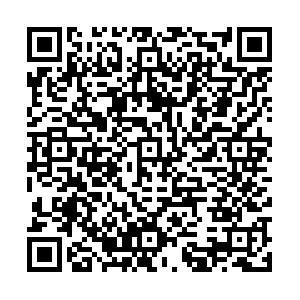Association between sexual sensation seeking and sexual risk behaviors among men who have sex with men in Guangzhou
-
摘要:
目的 分析广州市男男性行为人群(men who have sex with men,MSM)性感觉寻求与高危性行为的关联。 方法 2017年6月-2018年4月,通过智同公益服务中心友同门诊招募年龄18岁及以上的MSM。采用自行设计的电子问卷收集一般人口学特征、性行为特征、高危性行为和性感觉寻求等信息。采用非条件Logistic回归分析多性伴、一夜情和无保护肛交与性感觉寻求的关联。 结果 500名调查对象平均年龄(27.77±5.96)岁。调整了一般人口学特征与性行为特征后,多因素Logistic回归分析结果显示高性感觉寻求得分的MSM发生多性伴(OR=2.05,95%CI:1.40~2.30,P < 0.001),一夜情(OR=2.11,95%CI:1.44~3.09,P < 0.001)和无保护肛交(OR=1.70,95%CI:1.16~2.50,P=0.007)的风险高于低性感觉寻求者。 结论 广州市MSM高性感觉寻求者更可能发生高危性行为,在制定行为干预措施时应该考虑性感觉寻求的影响,以提高艾滋病干预的效果。 Abstract:Objective To evaluate the association between sexual sensation seeking (SSS) and sexual risk behaviors among men who have sex with men (MSM) in Guangzhou. Methods MSM aged 18 and over were recruited in Zhitong Charity from June 2017 to April 2018. Data on socio-demographic characteristics, sexual behaviors and SSS were collected using an electronic questionnaire. Logistic regression analyses were performed to evaluate the association between SSS and sexual risk behaviors. Results A total of 500 MSM were included in the current study. The mean age of the participants was (27.77±5.96) years old. The multiple logistic regression analyses showed that MSM with high SSS scores were more likely to engage in multiple sexual partners (OR=2.05, 95% CI: 1.40-2.30, P < 0.001), one-night stand (OR=2.11, 95% CI: 1.44-3.09, P < 0.001), and unprotected anal intercourse (OR=1.70, 95% CI: 1.16-2.50, P=0.007) than those with low SSS scores. Conclusions High SSS is associated with an increased risk of sexual risk behavior among MSM in Guangzhou. The behavior intervention strategy should be tailored for MSM with high SSS to improve the effectiveness to reduce sexual risk behaviors. -
表 1 高、低性感觉寻求的MSM社会人口学特征比较[n(%)]
Table 1. Comparison of high and low scores of sexual sensation seeking among different socio-demographic characteristics in men who have sex with men [n(%)]
变量 人数(人) 性感觉寻求 χ2值 P值 低 高 年龄(岁) 0.01 0.998 ≤25a 208(41.60) 94(45.19) 114(54.81) >25 292(58.40) 114(45.21) 160(54.79) 户籍所在地 8.04 0.018 广州市 143(28.60) 51(35.66) 92(64.34) 广东省其他市 192(38.40) 98(51.04) 94(48.96) 外省 165(33.00) 77(46.67) 88(53.33) 本地居住时间(月) 2.19 0.139 ≤12 57(11.40) 31(54.39) 26(45.61) >12 443(88.60) 195(44.02) 248(55.98) 婚姻状况 0.17 0.680 未婚 437(87.40) 196(44.85) 241(55.15) 曾婚b 63(12.60) 30(47.62) 33(52.38) 文化程度 1.74 0.419 初中及以下 27(5.40) 14(51.85) 13(48.15) 高中/中专 75(15.00) 38(50.67) 37(49.33) 大专及以上 398(79.60) 174(43.72) 224(56.28) 职业 0.16 0.922 在校学生 79(15.80) 35(44.30) 44(55.70) 在职/兼职 325(65.00) 149(45.85) 176(54.15) 非在职 96(19.20) 42(43.75) 54(56.25) 个人月收入(元) 3.18 0.528 无收入 60(12.00) 24(40.00) 36(60.00) 1~ 47(9.40) 26(55.32) 21(44.68) 3 000~ 141(28.20) 60(42.55) 81(57.45) 5 000~ 170(34.00) 77(45.29) 93(54.71) >10 000 82(16.40) 39(47.56) 43(52.44) 注:a≤25岁者为青少年MSM;b曾婚包括在婚、同居、离异和丧偶。 表 2 高、低性感觉寻求的MSM性行为特征比较[n(%)]
Table 2. Comparison of high and low scores of sexual sensation seeking among different sexual behavior characteristics in men who have sex with men [n(%)]
变量 人数(人) 性感觉寻求 χ2值 P值 低 高 首次肛交时年龄(岁) 0.02 0.882 <18 52(10.40) 23(44.23) 29(55.77) ≥18 448(89.60) 203(45.31) 245(54.69) 首次肛交时是否戴套 2.58 0.275 是 359(71.80) 165(45.96) 194(54.04) 否 106(21.20) 42(39.62) 64(60.38) 不清楚 35(7.00) 19(54.29) 16(45.71) 性取向 0.76 0.684 同性恋 368(73.60) 167(45.38) 201(54.62) 双性恋 110(22.00) 51(46.36) 59(53.64) 其他 22(4.40) 8(36.36) 14(63.64) 性角色 0.74 0.690 插入方 69(13.80) 34(49.28) 35(50.72) 插入/被插入方 352(70.40) 155(44.03) 197(55.97) 被插入方 79(15.80) 37(46.84) 42(53.16) 寻找同性性伴的途径 0.06 0.800 互联网 427(85.40) 194(45.43) 233(54.57) 实体场所 73(14.60) 32(43.84) 41(56.16) 表 3 性感觉寻求与高危性行为的关联分析[n(%)]
Table 3. The association between sexual sensation seeking and sexual risk behaviors in men who have sex with men [n(%)]
性感觉寻求 多性伴 一夜情 无保护肛交 cOR(95%CI)值a aOR(95%CI)值b cOR(95%CI)值 aOR(95%CI)值 cOR(95%CI)值 aOR(95%CI)值 低 1.00 1.00 1.00 1.00 1.00 1.00 高 1.94(1.35~2.79)c 2.05(1.40~2.30)c 2.02(1.41~2.90)c 2.11(1.44~3.09)c 1.50(1.05~2.15)d 1.70(1.16~2.50)e 注:acOR:crude odds ratio,粗比值比;baOR:adjusted odds ratio,调整比值比,为调整年龄、户籍所在地、地居住时间、婚姻状况、文化程度、职业、个人月收入、首次肛交时年龄、首次肛交时是否戴套、性取向、性角色和寻找性伴途径等因素后的结果;变量赋值根据表 1和表 2的变量的分类进行赋值。cP<0.001。dP<0.05。eP<0.01。 -
[1] 葛琳, 李东民, 李培龙, 等. 2010-2015年中国艾滋病哨点监测人群HIV、梅毒和HCV感染状况分析[J]. 疾病监测, 2017, 32(2): 111-117. DOI: 10.3784/j.issn.1003-9961.2017.02.008.Ge L, Li DM, Li PL, et al. Population specific sentinel surveillance foe HIV infection, syphilis and HCV infection in China, during 2010-2015[J]. Dis Surveill, 2017, 32(2): 111-117. DOI: 10.3784/j.issn.1003-9961.2017.02.008. [2] Zhang W, Xu JJ, Zou H, et al. HIV incidence and associated risk factors in men who have sex with men in Mainland China: an updated systematic review and meta-analysis[J]. Sex Health, 2016, 13(4): 373-382. DOI: 10.1071/SH16001. [3] Kalichman SC, Rompa D. Sexual sensation seeking and sexual compulsivity scales: validity, and predicting HIV risk behavior[J]. J Pers Assess, 1995, 65(3): 586-601. DOI: 10.1207/s15327752jpa6503_16. [4] Xu W, Zheng L, Liu Y, et al. Sexual sensation seeking, sexual compulsivity, and high-risk sexual behaviours among gay/bisexual men in Southwest China[J]. AIDS Care, 2016, 28(9): 1138-1144. DOI: 10.1080/09540121.2016.1153587. [5] 黄慧敏, 王棠, 燕虹, 等. 性感觉寻求与青少年男男性行为人群危险性行为的关系[J]. 中华流行病学杂志, 2015, 36(8): 821-824. DOI: 10.3760/cma.j.issn.0254-6450.2015.08.011.Huang HM, Wang T, Yan H, et al. Relationship between sexual sensation seeking and risk sexual behaviors among young men who have sex with men[J]. Chin J Epidemiol, 2015, 36(8): 821-824. DOI: 10.3760/cma.j.issn.0254-6450.2015.08.011. [6] Gao M, Xiao C, Cao Y, et al. Associations between sexual sensation seeking and AIDS-related knowledge, attitudes and behaviors among young men who have sex with men in China[J]. Psychol Health Med, 2017, 22(5): 596-603. DOI: 10.1080/13548506.2016.1200729. [7] 李煜, 李十月, 杨惠民, 等. 青少年男男性行为人群性感觉寻求水平与首次同性行为状况的关系[J]. 中华疾病控制杂志, 2018, 22(12): 1270-1273. DOI: 10.16462/j.cnki.zhjbkz.2018.12.016.Li Y, Li SY, Yang HM, et al. Relationship between sexual sensation seeking and the situation of having sex with men for the first time among young men who have sex with men[J]. Chin J Dis, Prev, 2018, 22(12): 1270-1273. DOI: 10.16462/j.cnki.zhjbkz.2018.12.016. [8] Saxton PJ, Dickson NP, Hughes AJ, et al. Infrequent condom use with casual partners among New Zealand gay and bisexual men[J]. N Z Med J, 2015, 128(1426): 49-61. http://europepmc.org/abstract/MED/26913907 [9] Lu HY, Ma LC, Lee TS, et al. The link of sexual sensation seeking to acceptance of cybersex, multiple sexual partners, and one-night stands among Taiwanese college students[J]. J Nurs Res, 2014, 22(3): 208-215. DOI: 10.1097/jnr.0000000000000043. [10] Joseph JE, Liu X, Jiang Y, et al. Neural correlates of emotional reactivity in sensation seeking[J]. Psychol Sci, 2009, 20(2): 215-223. DOI: 10.1111/j.1467-9280.2009.02283.x. [11] Yu F, Nehl EJ, Zheng T, et al. A syndemic including cigarette smoking and sexual risk behaviors among a sample of MSM in Shanghai, China[J]. Drug Alcohol Depend, 2013, 132(1-2): 265-270. DOI: 10.1016/j.drugalcdep.2013.02.016. [12] Harrington NG, Palmgreen PC, Donohew L. Programmatic research to increase the effectiveness of health communication campaigns[J]. J Health Commun, 2014, 19(12): 1472-1480. DOI: 10.1080/10810730.2014.954082. [13] Zimmerman RS, Palmgreen PM, Noar SM, et al. Effects of a televised two-city safer sex mass media campaign targeting high-sensation-seeking and impulsive-decision-making young adults[J]. Health Educ Behav, 2007, 34(5): 810-826. DOI: 10.1177/1090198107299700. -




 下载:
下载: 